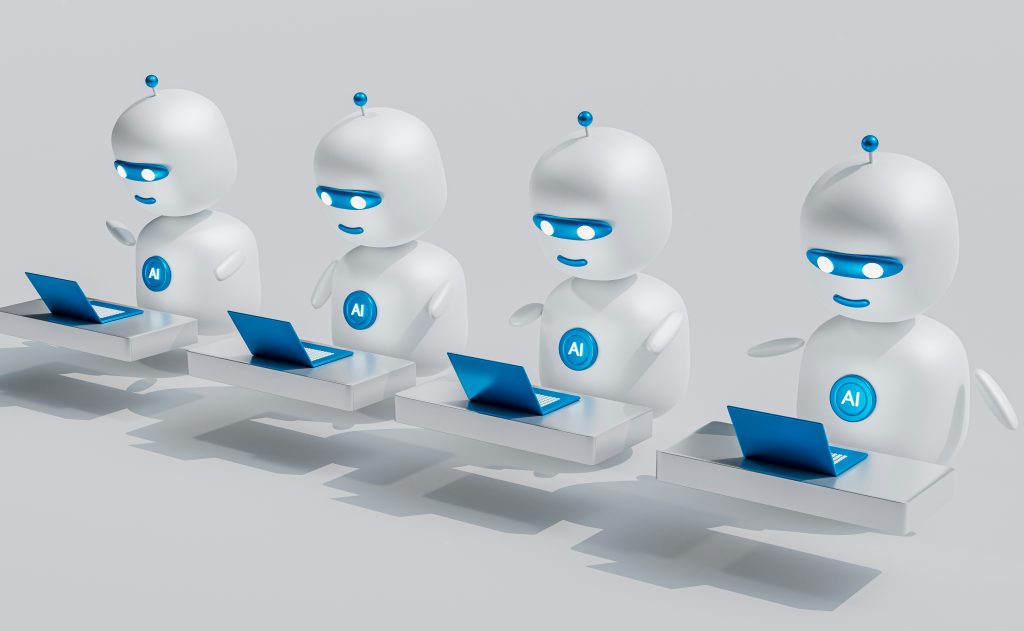Robin Khokhar
Robin Khokhar is an SEO specialist who mostly writes on SEO. Thus sharing tips and tricks related to SEO, WordPress, blogging, and digital marketing, and related topics.
AI Detection tools have become vital in digital marketing and communication. The rise of artificial intelligence (AI) has blurred the lines between...

Image Credits: unsplash
AI Detection tools have become vital in digital marketing and communication. The rise of artificial intelligence (AI) has blurred the lines between human and AI-generated content, posing a challenge in distinguishing between the two.
In a recent Tooltester survey of 1,900 Americans, more than half (53%) struggled to discern between ChatGPT output and human writing. When identifying content produced by GPT-4, an even more significant percentage (63.5%) couldn’t differentiate whether a bot or a human wrote it.
More proof from Stanford backs up what we’ve found people can only spot AI-written content about half the time. It’s a clear sign that AI is improving at mimicking human writing.
Enter AI content detector tools like GPTZero and OpenAI’s Classifier. They’re in the spotlight because we need help figuring out if content is human or AI, primarily when people use AI to deceive.
But here’s the hitch these detectors, flawed and often dead wrong, rely on imperfect methods to decide if a text is AI-made.
Do you need these tools? In our blog post and video, we’ll dive into the world of AI detection the good, the bad, and what it means for businesses. Get ready for an eye-opening journey into AI content detection!
Even with their progress, AI detection tools can mess up, causing mistakes and false alarms.
Take a student wrongly accused of cheating on his history exam because of a wonky AI content detector. It shows how these tools have limits and can do more harm than good if we rely on them entirely.
Here are more cases where AI detection falls flat:
1. Social media watch: Big platforms like Facebook and Twitter use AI to catch destructive content. But it often tags innocent posts as rule-breakers while letting harmful ones slide.
2. School checks: Many schools use AI to find copied work. But sometimes, these systems goof up and point fingers at students for plagiarism when they didn’t do anything wrong.
3. Job hunts: Companies use fancy tools to read through job applications. But sometimes, these tools must be more accurate in understanding specific ways of talking or cultural stuff, which can be unfair to some applicants.
It’s like a guessing game. These AI tools check out the content and decide if another AI wrote it based on how much text follows specific patterns.
So, why do these AI content detection tools mess up?
1. More training data: AIs need many good examples to read and learn from. The detector will be perfect if more than the examples are needed.
2. Limits to language models: AI-made content is getting fancier, making it tricky for detectors to tell if a human or machine wrote it. As tools like GPT-3 improve, spotting the difference is even more challenging.
3. Tricky tactics: AI writers learn and change their tricks, sometimes faster than detection algorithms can keep up. It means we always need updates to stay in the game.
With these challenges, we’ve got to find a balance between using powerful AI tools while knowing they might goof up. Mixing artificial intelligence with human know-how lets your business enjoy the best of both: tech efficiency without losing the accuracy or special human touch.
AI detection glitches teach us we need to grasp how folks can rightly or wrongly use AI. So, it’s crucial to consider where AI is going and how it impacts our businesses.
AI is shaking things up in various industries:
1. Marketing: Thanks to AI software, marketers can quickly create quality content, letting businesses of all sizes compete online.
2. Education: AI-made content helps personalize learning materials and meet students’ needs. But, it also raises worries about possible misuse for cheating.
3. Journalism: News outfits use AI tools for automated reporting, generating articles from structured data. This lets journalists focus on complex stories needing human insight.
As advanced AI models become more common, we need better ways to tell if text is human or machine-made. Lately, we’ve seen a boom in AI content detectors like OpenAI’s Classifier, GPTZero, and my favorite, Content at Scale’s AI Detector.
Remember, these tools aren’t perfect they can’t nail AI content detection every time. So, while we can use them, take it with a big grain of salt until the tech gets better.
AI detection tools have improved, but they could be better. Mistakes can cause problems for people and businesses.
Plus, if you focus on quality content for people, Google is okay with it if it’s made by AI or humans. So, it’s your call whether to use these tools. Running your AI content through them can be handy for better readability.
Recommended:
The Best AI Tools You Can Use To Boost Your Productivity.